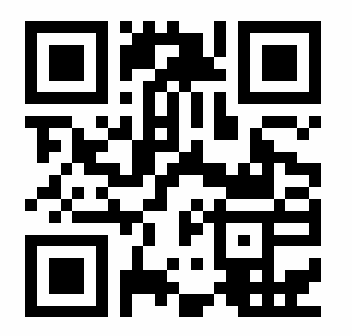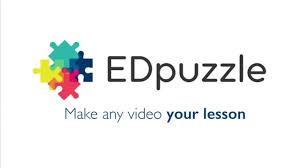resources on Finland Phenomenon
link to the DVD: https://www.imdb.com/title/tt2101464/
also available here:
or here
http://www.progressiveteacher.in/the-finnish-phenomenon-in-education/
Digital Literacy for St. Cloud State University
link to the DVD: https://www.imdb.com/title/tt2101464/
also available here:
or here
http://www.progressiveteacher.in/the-finnish-phenomenon-in-education/
https://www.iste.org/standards/for-students#startstandards
+++++++++++
https://blog.stcloudstate.edu/ims/2016/11/22/iste-standards-for-students/
When a student is brilliant on the street corner but falling asleep in class, something is wrong with the schooling system.
Emdin labeled financially-driven education entrepreneurs as “enemies.” And he took on the nonprofit leaders, policymakers and edtech do-gooders he believes have “good intentions but enemy executions,” dubbing them “frenemies.”
http://www.freetech4teachers.com/2018/03/how-to-share-kahoot-challenges-through.html
+++++++++++
more on Kahoot in this IMS blog
https://blog.stcloudstate.edu/ims?s=kahoot
https://www.edsurge.com/news/2017-04-06-5-all-too-common-ways-edtech-implementations-fail
On the surface, adopting technology to support teacher needs or student challenges isn’t terribly complex: define the problem you’re trying to solve, identify the right tools for the job, and implement the tools effectively and with fidelity.
challenges. End users are too often removed from the decision-making process during procurement. Educators argue that too many products don’t actually meet the needs of teachers or students. Still others worry that it is too easy to implement new and popular technology without considering whether it is research-based and effective.
Only 33 percent of parents surveyed by the Learning Assembly said their child’s school did an excellent job using technology to tailor instruction.
Technology is just a tool, not a means in and of itself. Any school or teacher that sets out to use technology for its sake alone, and not in the service of personalizing learning or addressing specific needs, is on a mission to fail.
A survey from Samsung found that 37 percent of teachers say they would love to use technology but don’t know how, and 76 percent say they would like a professional development day dedicated to technology.
ideos that focus on scaling and modeling best practices (produced by places like the Teaching Channel and The Learning Accelerator) can help teachers and schools do this.
Teachers face initiative fatigue: They are constantly being asked to implement new programs, integrate new technologies, and add on layers of responsibility. In one Wisconsin district, nearly half of teachers felt ongoing district initiatives were a “significant area of concern.”
Forward-thinking schools take the time to learn from the challenges of other schools, and recruit a coalition of the willing.
Relying on multiple devices (remote, clicker, iPad, computer mouse) to launch or navigate technology can be difficult. Additionally, teachers may start to use a tool, only to realize it is not flexible enough to meet their original needs, fit into the constraints of their particular school or classroom, or allow them to integrate their own content or supplemental resources.
Lack of useful data, problem definition, weak teacher buy-in, first impressions, and usability challenges all have the potential to torpedo smart technology products.
1. Ask Yourself: Why VR or AR
AR and VR are mediums for the transmission of information, and many people will judge these mediums by the content that is produced within them. For educators seeking to gain buy-in from administrators and other colleagues it is critical for them to justify the reasons their content requires new reality media.
2. Just Dive In
Gartner Hype Cycle’s “slope of enlightenment”—meaning the technology is just entering public acceptance.
Given the newness of these mediums, it is no surprise that few curricular resources exist to support courses around VR and AR. Professional development sessions on new reality tools are almost non-existent, which means educators seeking to use virtual or augmented reality simply need to dive into the subjects.
3. Go Beyond Storytelling
Studies using VR demonstrate the ‘Proteus Effect’—taking on the psychology of inhabiting a different body and unconsciously changing our behavior to conform to it (learning empathy through VR)
4. Master the Machines
“The equipment matters. If there is a latency between the computer and the VR set that can cause a lot of problems,”
With VR equipment ranging from about $15 to $600 educators will have to check the budget or start writing grant proposals to gain access to the higher quality machines.
5. Understand Your Student’s Needs
described as a “quantum shift” in the way we interact, learn and experience.
+++++++++++++
more on VR and AR in schools in this IMS blog
https://blog.stcloudstate.edu/ims?s=virtual+rality+education
http://practicaledtech.com/2018/01/28/create-your-own-virtual-reality/
Google’s Cardboard Camera and Street View app are good tools for creating simple virtual reality imagery
+++++++++++++
more on VR in education in this IMS blog
https://blog.stcloudstate.edu/ims?s=virtual+rality+education
By Nicole Krueger Leadership
https://www.iste.org/explore/articleDetail?articleid=2177
A virtual reality headset can take students on an immersive journey to another world. But no matter how cool it is, if that $3,000 piece of equipment enters a classroom and doesn’t provide any real instructional value, it can quickly become a very expensive paperweight.
Most schools don’t do edtech procurement really well yet. Sometimes we buy products that end up in closets because they don’t fit the instructional needs of students, and we end up not being good stewards of taxpayer dollars.
Located in the district’s central office, where hundreds of teachers and staff members stop by each week for professional development, the playground offers a creative space that encourages teachers to explore new tools that have been vetted and approved by the district’s tech department.
In the United States, K-12 schools spend more than $13 billion a year on edtech — often without any idea whether it will make a difference in learning outcomes.
++++++++++++++++
More on ISTE in this IMS blog
https://blog.stcloudstate.edu/ims?s=iste
more on digital literacy for ed leaders in this IMS blog
https://blog.stcloudstate.edu/ims?s=digital+literacy+EDAD
Where | Къде: СУ „Димитър Матевски“ https://goo.gl/maps/rojNjE3dk4s and online ( виртуално)
When | Кога: 2. май, 2018, 14 часа | May 2, 2018, 2PM local time (Bulgaria)
Who | Кой: преподаватели и педагози | teachers and faculty
How | Как: използвайте “обратна връзка” за споделяне на вашите идеи | use the following hashtag for backchanneling #BGtechEd
short link: http://bit.ly/teachassess |

Live stream: |
Тема1. Сравняване на Kahoot, Edpuzzle и Apester – 1-1, 1/2 час продължителност
Topic 1: A comparison of Kahoot, Apester and EdPuzzle
definitions | термини : BYOD (BYOx), flipped classroom, formative assessment (vs summative assessment)
| Kahoot (https://kahoot.it/) – 10 мин. | |
 |
|
| Apester (https://apester.com/ )– 10-15мин. | |
| |
|
| Edpuzzle (https://edpuzzle.com )– 10 – 15мин. | |
 |
https://edpuzzle.com/assignments/5ad4cad48f4df34107c58bd0/watch |
Тема 2. Виртуална реалност в учебния процес – теория и практика- 1-1, 1/2 час продължителност
Topic 2. Virtual reality in teaching and learning – theory and hands-on
When a student is brilliant on the street corner but falling asleep in class, something is wrong with the schooling system
Ако учащ се е страхотен на ъгъла на улицата, но се проваля или заспива в клас, тогава нещо е грешно с учебната система
https://blog.stcloudstate.edu/ims/2018/04/17/education-teched-frenemies/
VR can be inexpensive and effective | Виртуална / разширена реалност може да бъде ефикасна и ефективна: https://blog.stcloudstate.edu/ims/2018/04/26/teaching-virtual-reality/
https://www.linkedin.com/groups/2811/2811-6391674579739303939
Definitions for VR/AR/MR | дефиниции на: виртуална реалност; разширена реалност; смесена реалност
https://blog.stcloudstate.edu/ims/2018/03/21/t4tl-games-and-vr-library/
#3 from the following blog entry: https://blog.stcloudstate.edu/ims/2018/04/17/practical-about-vr-and-ar-in-schools/ (go beyond storytelling)
++++++++++++++
Additional Information | Дпълнителна литература/информация
https://blog.stcloudstate.edu/ims/2016/02/22/formative-assessment-ideas/
Formative Assessment Tools: https://blog.stcloudstate.edu/ims/2016/01/13/formative-assessment-tools/
https://blog.stcloudstate.edu/ims/2014/12/09/formative-assessment/